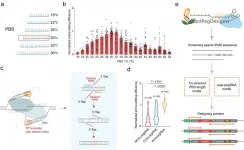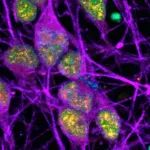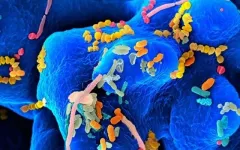(Press-News.org) Precision genome editing enables the precise modification of DNA in living cells, thus enabling a breadth of opportunities for plant breeding. Prime editors, developed by Prof. David R. Liu and his colleagues, permit the installation of desired edits in a programmable target site. They are comprised of an engineered Cas9 nickase (H840A)-reverse transcriptase (RT) fusion protein and a prime editing guide RNA (pegRNA).
Prime editors were previously developed and optimized as an extremely versatile editing strategy for generating programmable point mutations, insertions and deletions in rice and wheat by Prof. GAO Caixia of the Institute of Genetics and Developmental Biology (IGDB) of the Chinese Academy of Sciences along with her research team and collaborators.
They found that the editing efficiency of the plant prime editor was strongly affected by the PBS and RT template sequence, suggesting the need for optimized pegRNA designs to yield higher product conversions.
To determine principles for efficient prime editing, Prof. GAO and Prof. LI Jiayang, also of IGDB, along with their research teams, reported optimized pegRNA design strategies that maximize plant prime editing efficiency.
Since the hybridization of the primer binding site (PBS) with the non-target strand ssDNA is the initial step in reverse transcription, the researchers hypothesized that the melting temperature (Tm) of the PBS sequence (referred to hereafter as PBS Tm) is an important parameter for prime editors. By analyzing prime editing efficiencies at 18 endogenous target sites in rice protoplasts, they found that PBS Tm strongly affects editing efficiency, with maximal prime editing occurring when PBS Tm is 30 °C in rice.
In addition to identifying optimal pegRNA designs, they also introduced advances to prime editing through the use of dual pegRNAs. This strategy relies on two pegRNAs generating respective ssDNA flaps that base pair with each other in trans while encoding the same edit on both strands of the newly synthesized DNA.
This new editing approach resulted in 3.0-fold improvements in average in prime editing efficiency compared to using individual pegRNAs alone. Furthermore, the scientists generated prime editors comprised of SpG (an engineered Cas9 with expanded PAM targeting range) to expand the targeting scope of this dual-pegRNA editing strategy. Together, optimizing PBS Tm and using a dual-pegRNA strategy boosted prime editing efficiency up to 17.4-fold in rice.
Based on these two advancements, the team developed a user-friendly web application, PlantPegDesigner, to help other researchers design prime editing tools best suited for their applications.
PlantPegDesigner offers users flexibility and control of various parameters based on their individual needs. This tool recommends spacer-PAM sequences, PBS sequences, RT template sequences and also PCR cloning primers for vector construction. Compared to other web applications, PlantPegDesigner-recommended dual pegRNAs resulted in up to a 46-fold improvement in editing activity in rice.
In summary, this work simplified the design of pegRNAs, thus providing a reliable solution for efficient prime editing in plants. The flexibility of the optimized plant prime editing system will advance both plant breeding and functional genomics research.
INFORMATION:
This study, entitled "High-efficiency prime editing with optimized, paired pegRNAs in plants," was published in Nature Biotechnology online on March 25.
This research was supported by the National Transgenic Science and Technology Program of China, the Strategic Priority Research Program of the Chinese Academy of Sciences, and the National Natural Science Foundation of China.
Researchers at the National Institutes of Health (NIH) have discovered specific regions within the DNA of neurons that accumulate a certain type of damage (called single-strand breaks or SSBs). This accumulation of SSBs appears to be unique to neurons, and it challenges what is generally understood about the cause of DNA damage and its potential implications in neurodegenerative diseases.
Because neurons require considerable amounts of oxygen to function properly, they are exposed to high levels of free radicals--toxic compounds that can damage DNA within cells. ...
Fossil remains of the human pelvis are rare because the pelvic bones do not preserve very well. Therefore, it has remained unclear when human sex differences in the pelvis evolved: jointly with upright walking, or later, together with the large human brains. "We have discovered that the pattern of sex differences in the human pelvis is probably much older than previously thought", says evolutionary biologist Barbara Fischer.
A team of biologists from the University of Vienna, the KLI for Evolution and Cognition Research, and the University of Calgary compared pelvic sex differences in humans with those in chimpanzees, the most closely-related living species to modern ...
Power converters are the little-known systems that make electricity so magical. They are what allow us to plug in our computers, lamps and televisions and turn them on in a snap. Converters transform the alternating current (AC) that comes out of wall sockets into the exact level of direct current (DC) that our electronics need. But they also tend to lose, in average, up to 20% of their energy in the process.
Power converters work by using power transistors - tiny semiconductor components designed to switch on and off and withstand high voltages. Designing novel power transistors to improve the converters' efficiency is the aim of the team of EPFL engineers. With their entirely new transistor design, based on the counterintuitive application ...
University of Texas at Dallas researchers have discovered that a novel surface they developed to harvest water from the air encourages tiny water droplets to move spontaneously into larger droplets.
When researchers placed microdroplets of water on their liquid-lubricant surface, the microdroplets propelled themselves to climb, without external force, into larger droplets along an oily, ramp-shaped meniscus that forms from the lubricant around the larger droplets. The "coarsening droplet phenomenon" formed droplets large enough for harvesting.
"This meniscus-mediated climbing effect enabled rapid coalescence on hydrophilic ...
The evolving science of wisdom rests on the idea that wisdom's defined traits correspond to distinct regions of the brain, and that greater wisdom translates into greater happiness and life satisfaction while being less wise results in opposite, negative consequences.
Scientists have found in multiple studies that persons deemed to be wiser are less prone to feel lonely while those who are lonelier also tend to be less wise. In a new study, published in the March 25, 2021 issue of the journal Frontiers in Psychiatry, researchers at University of California San Diego School of Medicine take the connection between wisdom, loneliness ...
An analysis of adult human brain tissue reveals over 900 proteins tied to epilepsy. The brain disorder, estimated to afflict more than 3 million Americans, is mostly known for symptoms of hallucinations, dreamlike states, and uncontrolled, often disabling bodily seizures.
Led by researchers at NYU Grossman School of Medicine, the study examined molecular differences among the brains of 14 epilepsy patients and another group of 14 adults of similar age and gender who did not have the disease.
Study results showed that altered levels of brain proteins predominated in the hippocampus, a structure located deep inside ...
Researchers from Charité - Universitätsmedizin Berlin and the Francis Crick Institute have developed a mass spectrometry-based technique capable of measuring samples containing thousands of proteins within just a few minutes. It is faster and cheaper than a conventional blood count. To demonstrate the technique's potential, the researchers used blood plasma collected from COVID-19 patients. Using the new technology, they identified eleven previously unknown proteins which are markers of disease severity. The work has been published in Nature Biotechnology*.
Thousands of proteins are active inside the human body at any given time, providing its structure and enabling reactions which are essential to life. The body raises and lowers the activity ...
Expectant women are more likely to give birth early if they have high blood levels of a chemical used in flame retardants compared with those who have limited exposure, a new study finds.
These polybrominated diphenyl ethers (PBDEs) are used in the manufacture of furniture, carpeting, and other products to reduce flammability. Previous studies have found that the substances can leach into household dust and build up in the body where they may interfere with the thyroid, an organ that secretes brain-developing hormones. Childhood exposure to PBDEs has been linked to learning disabilities, autistic ...
Millions of years ago, aphid-like insects called whiteflies incorporated a portion of DNA from plants into their genome. A Chinese research team, publishing March 25th in the journal Cell, reveals that whiteflies use this stolen gene to degrade common toxins plants use to defend themselves against insects, allowing the whitefly to feed on the plants safely.
"This seems to be the first recorded example of the horizontal gene transfer of a functional gene from a plant into an insect," says co-author Ted Turlings (@FARCE_lab), a chemical ecologist and entomologist ...
Octopuses are known to sleep and to change color while they do it. Now, a study publishing March 25 in the journal iScience finds that these color changes are characteristic of two major alternating sleep states: an "active sleep" stage and a "quiet sleep" stage. The researchers say that the findings have implications for the evolution of sleep and might indicate that it's possible for octopuses to experience something akin to dreams.
Scientists used to think that only mammals and birds had two sleep states. More recently, it was shown that some reptiles also show non-REM and REM sleep. A REM-like sleep state was reported ...






